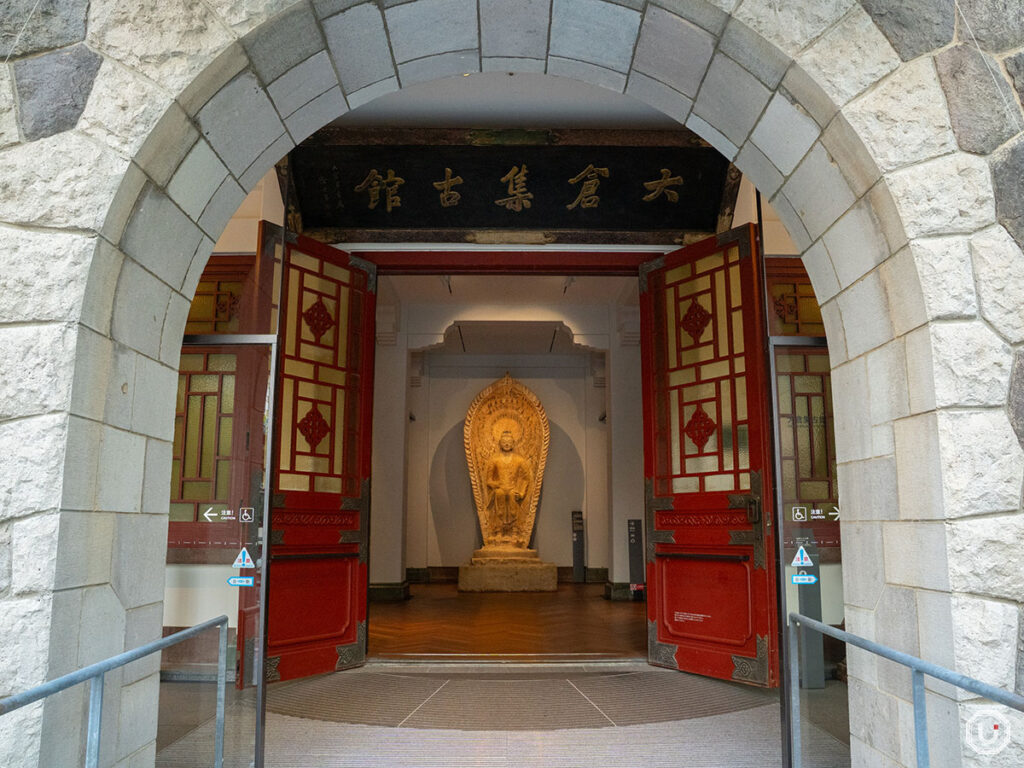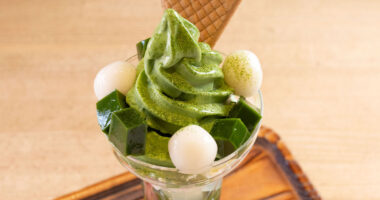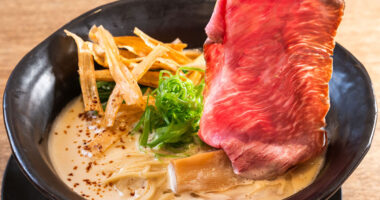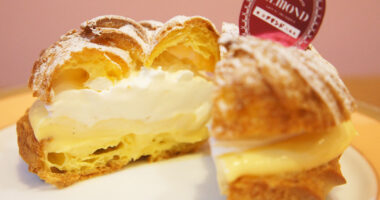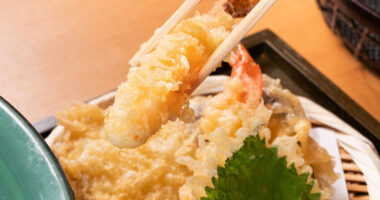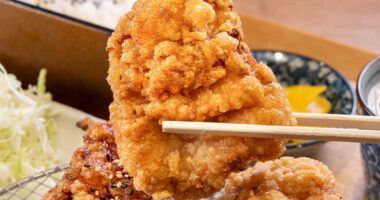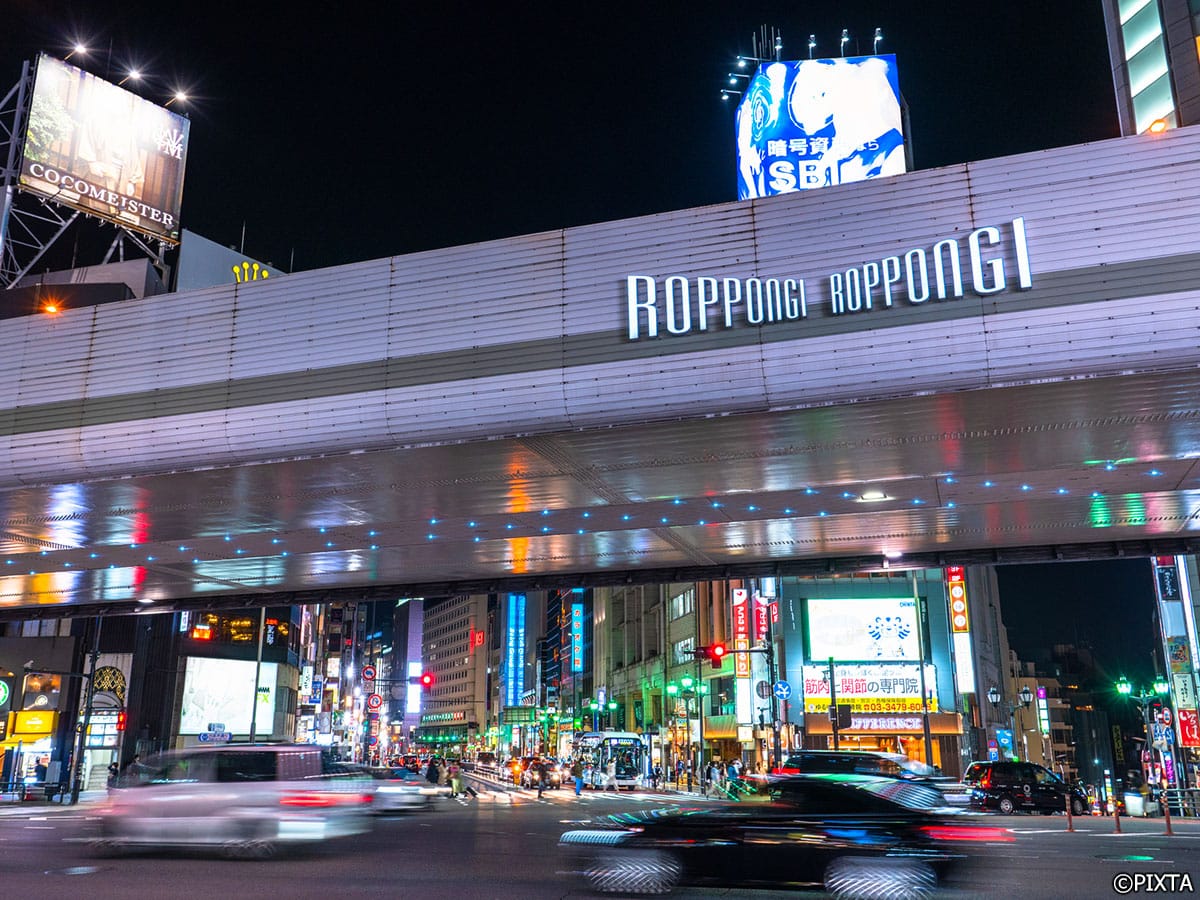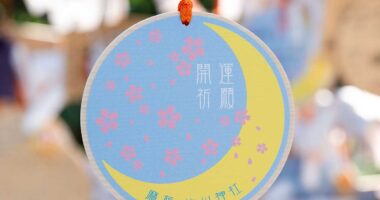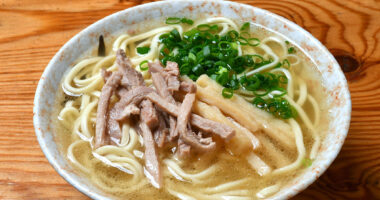Located in Toranomon, Minato Ward, the Okura Museum of Art is Japan’s oldest existing private museum.
It houses approximately 2,500 works, including antiques from Japan and across Asia collected over a lifetime by businessman Kihachiro Okura (1837-1928), active from the Meiji to Taishō periods, as well as modern Japanese paintings gathered by his son Kishichiro Okura (1882-1963), the founder of Hotel Okura.
The building, renovated in 2019, is itself a highlight. Here, we take a closer look at the many charming points of the Okura Museum of Art.
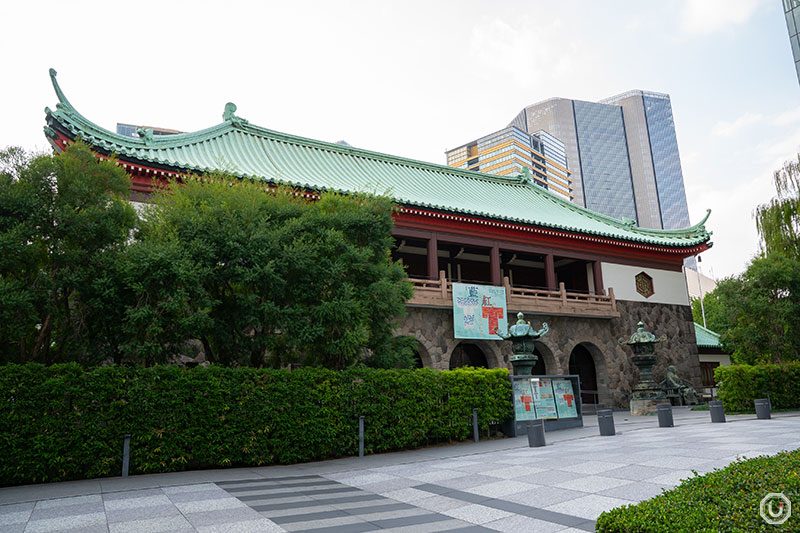
Exterior of the Okura Museum of Art
The Okura Tokyo hotel is located right next to the museum
The museum is located adjacent to The Okura Tokyo, one of Japan’s premier luxury hotels.
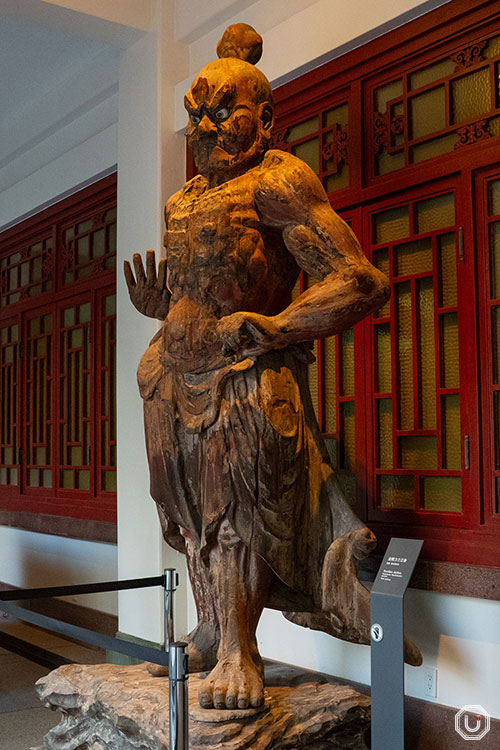
Kongōrikishi (guardian) statue
Stepping inside, visitors are immediately greeted by two towering Kongōrikishi (guardian) statues flanking the entrance. These joined-wood statues, dating from the Kamakura to Muromachi periods, convey a striking sense of strength and energy.
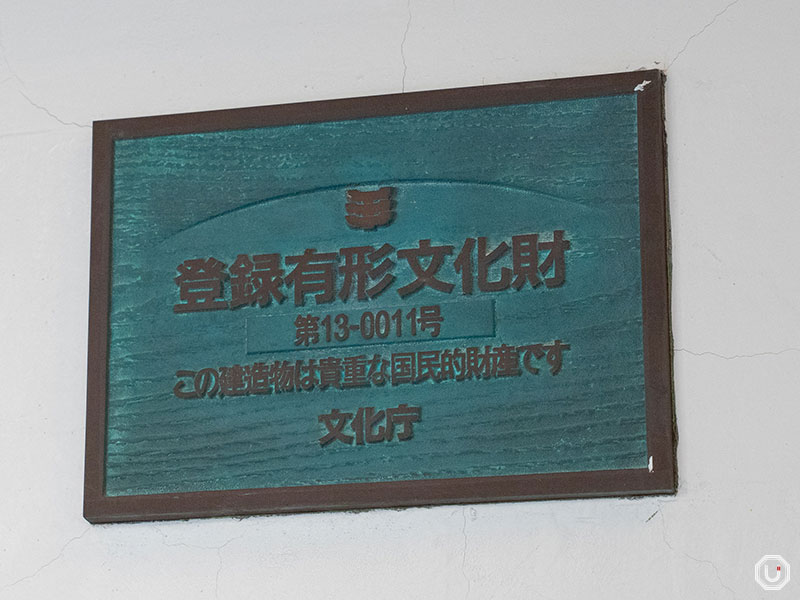
On the left side of the entrance, you’ll also find a plaque designating it as a Registered Tangible Cultural Property, lending a sense of historical weight.
Many of the original buildings and displays from its founding in 1917 were lost in the Great Kanto Earthquake of 1923. However, the museum was redesigned by Chūta Itō, a professor at Tokyo Imperial University and also known for designing Tsukiji Hongwanji Temple, and reopened in 1928.
Itō’s architectural touch imbues the interior of the museum with Asian motifs and designs throughout.
The Okura Museum of Art is a place where visitors can enjoy not only fine art but also the beauty of architecture itself.
The museum does not have permanent exhibitions. Instead, it hosts special and themed exhibitions, though the Buddhist statues and reliefs introduced here can be seen in any exhibition.
As of September 2025, the museum is closed for exhibition changes. From November 22, 2025, to January 18, 2026, it will hold the special exhibition roughly translated as “Gods and Buddhas Who Aid and Comfort People: The World of Daoist and Buddhist Figure Paintings.”
However, some works—such as the guardian statues at the entrance—are always on display.
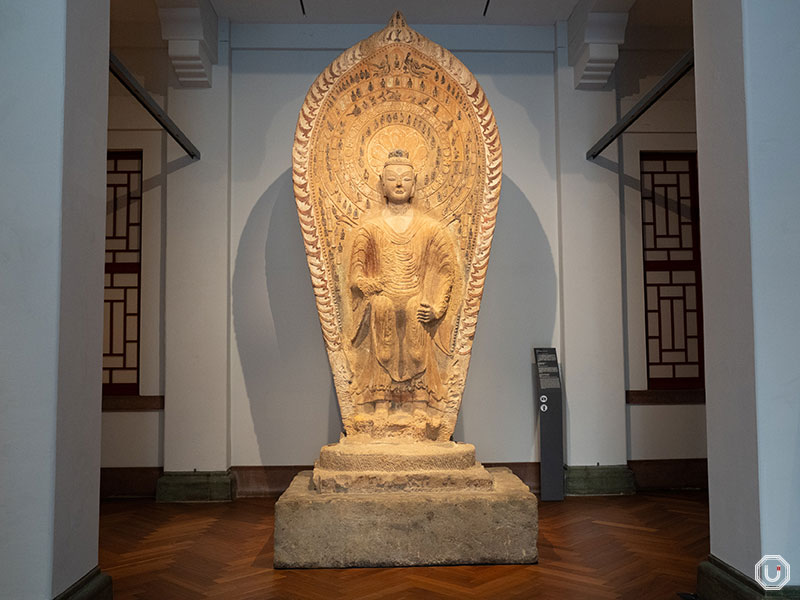
A Buddhist statue brought from China
For example, a Buddhist statue imported from China at the time of the museum’s reopening in 1928 was once considered the oldest in the world.
This statue is said to have been created by an ethnic minority group in China as a prayer for the prosperity of their clan.
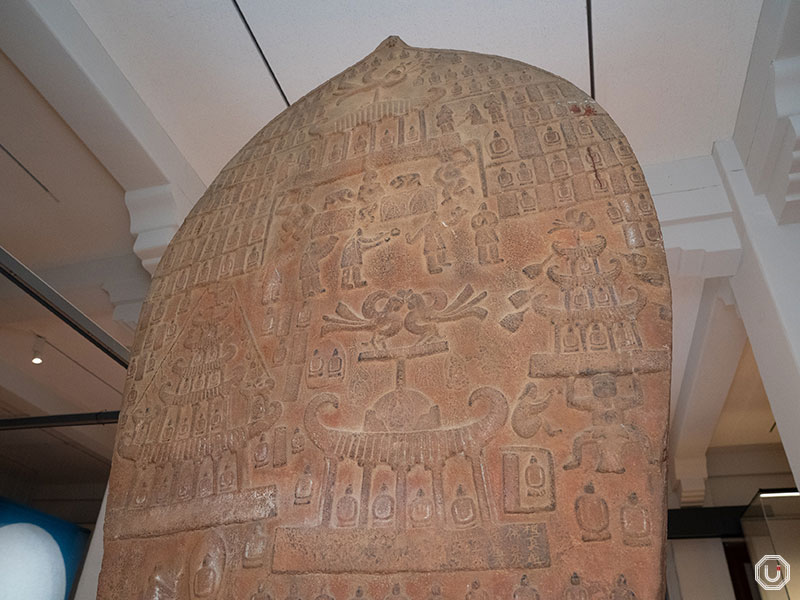
The back of the Buddhist statue brought from China
Be sure to look at the back as well—you can see reliefs of soldiers and attendants, along with the names of people connected to its creation.
Take in the elaborate decorations that fill the museum
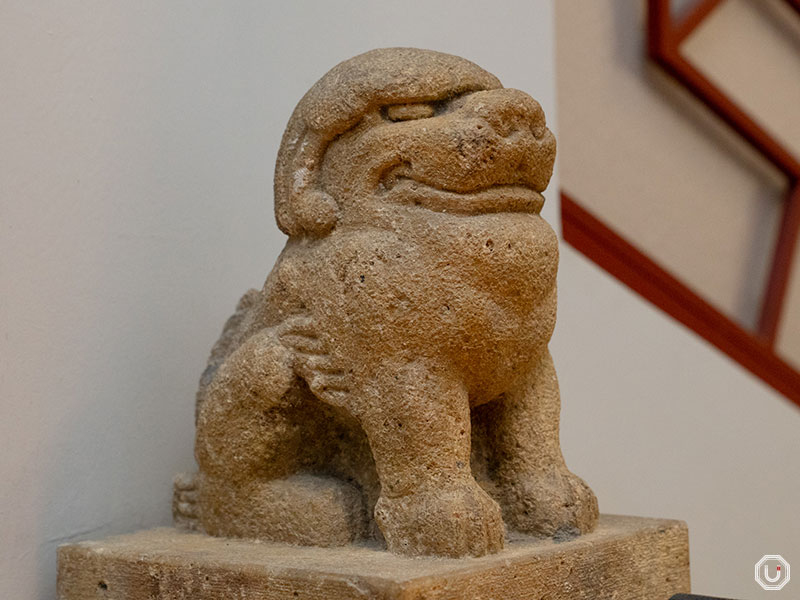
The exhibition halls are divided between the first and second floors. As you climb the stairs, be sure to notice the rounded, charming lion resting on the handrail.
This creature is said to serve the role of putting visitors at ease.
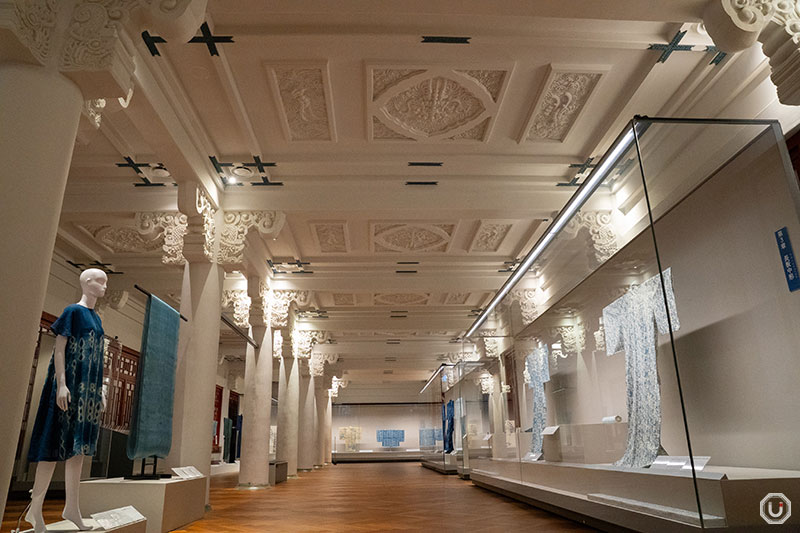
Interior of the second-floor exhibition room.This photo shows a past exhibition and the works are not currently on display.
Stepping into the second-floor exhibition room, you’ll notice decorations different from those on the first floor. The finely detailed reliefs on the ceiling and pillars are especially striking.
A prominent dragon relief is proudly displayed on the ceiling.
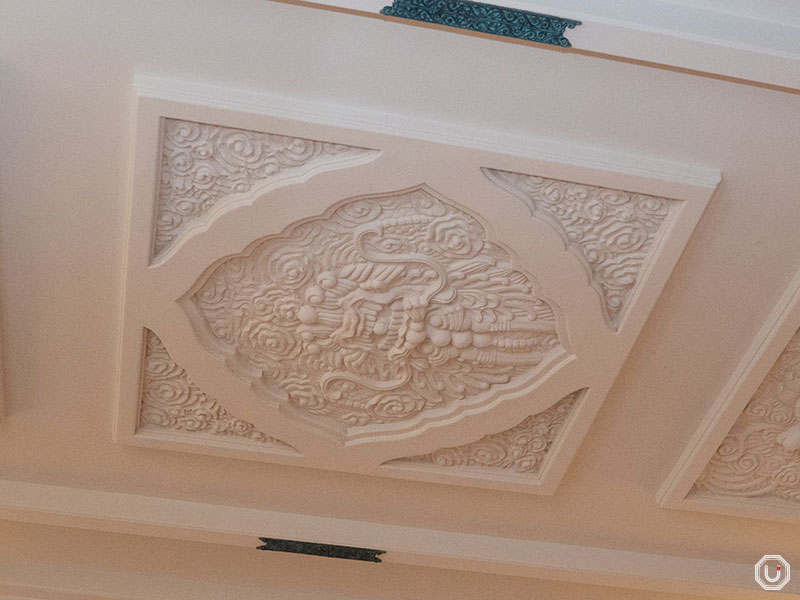
High up on the columns that support the eaves, you’ll find tokyō (decorative wooden brackets). Sitting atop them is a mythical creature called a fun, believed to have power over water.
You can also spot these fun figures on the building’s roof, so be sure to look for them from outside as well.
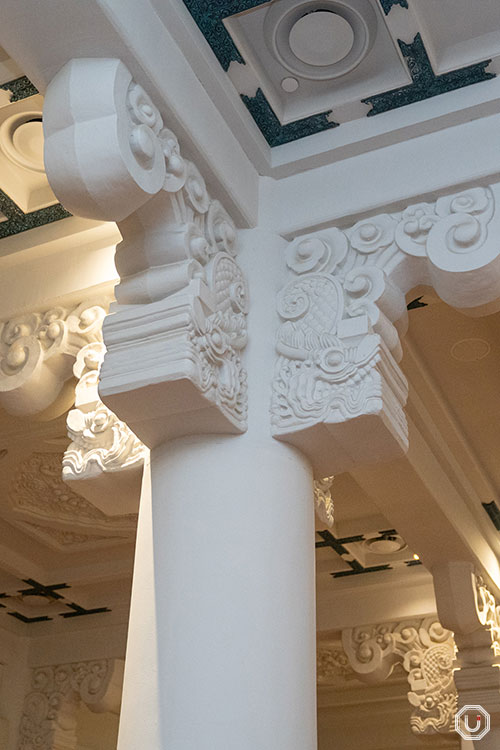
The fun seated atop the decorative bracket
Having lost its previous building in the Great Kanto Earthquake, architect Chūta Itō filled much of the interior with decorative elements meant to ward off evil and protect against disasters.
On the second floor, you’ll also find a spacious terrace adorned with beautiful Chinese-style motifs.
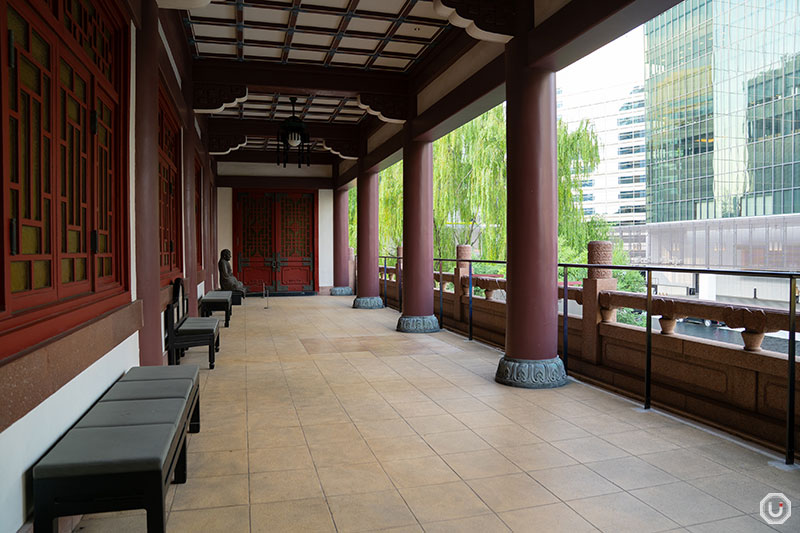
Second-floor terrace
The chairs placed on the terrace were designed by Chūta Itō himself, and have been carefully preserved and restored since the museum first opened.
Take a seat and experience nearly 100 years of history.
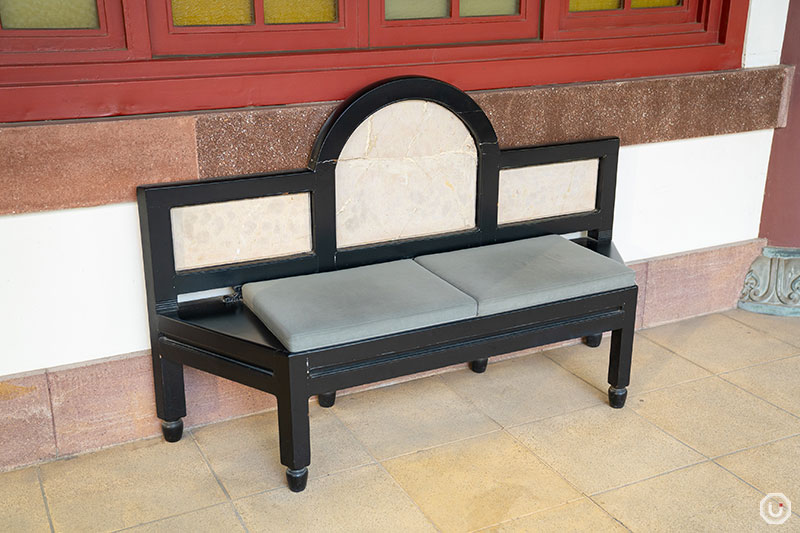
Chairs designed by Chūta Itō
The ceiling lights also remain unchanged since the museum’s opening.
From the coffered ceiling to the Chinese-style window frames, you can appreciate the terrace’s beauty down to the finest details.
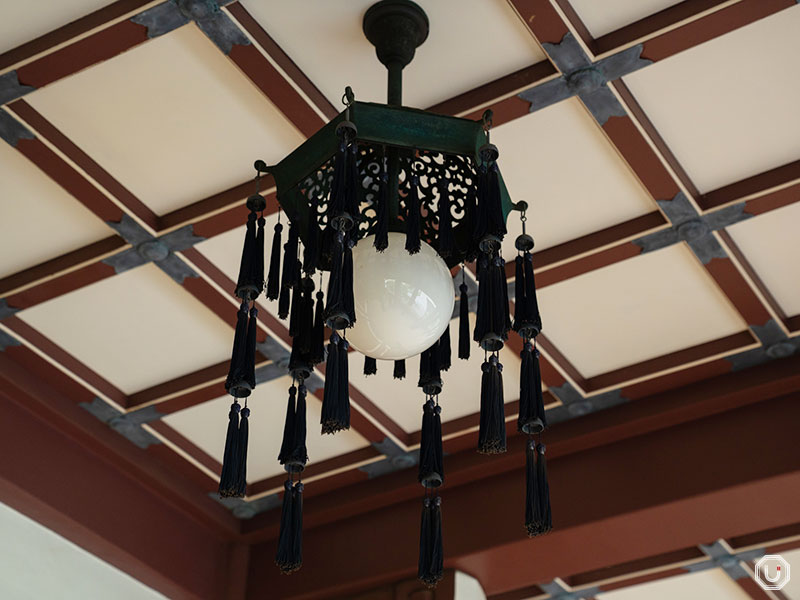
Outdoor sculpture highlights
There’s plenty to enjoy outside the museum as well.
A bronze statue of the museum’s founder, Okura Kihachirō, is a popular photo spot for visitors.
Behind the building, you’ll also find “Twin Turtles” (Sōkame), a sculpture created in 1913 by Takeishi Kōsaburō.
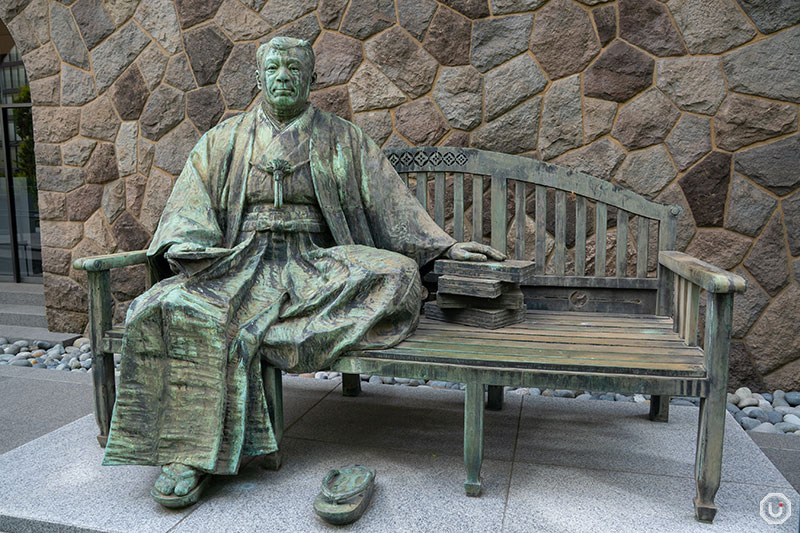
Bronze statue of Okura Kihachirō
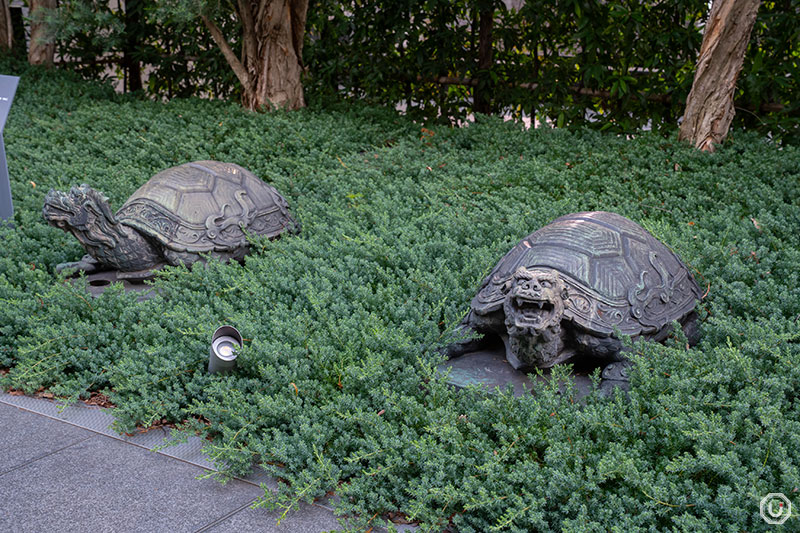
“Twin Turtles”
Around the grounds are old stone statues from Korea and China, as well as carvings of mythical creatures—all of which can be viewed even when the museum is closed.
At the front of the building stands a pair of tall stone lanterns, originally from Kan’eiji Temple in Ueno, a family temple of the Tokugawa shogunate.
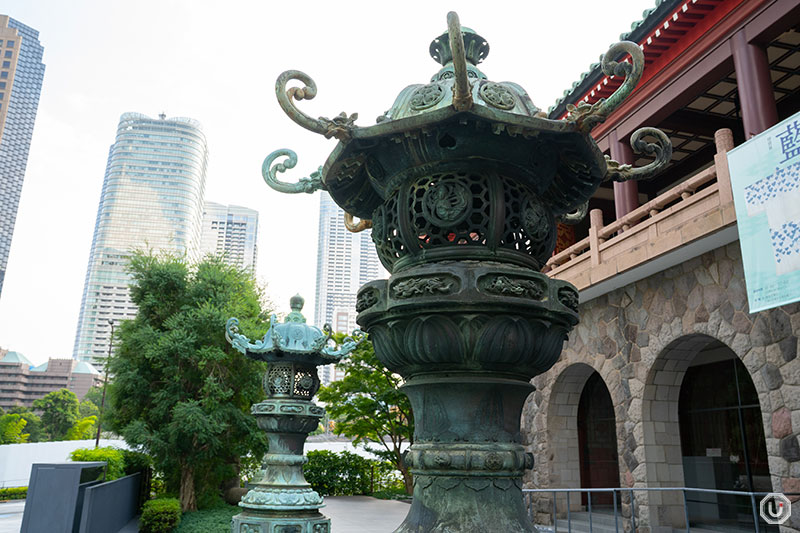
Tall stone lanterns
Pay special attention to the lantern on the right. It bears an inscription naming its donor: “Sangi Jusanmi Ken’yuki Ukon’e Gon Chūjō Mitsukuni-mae.”
The “Mitsukuni” here refers to Tokugawa Mitsukuni, lord of the Mito domain and grandson of Tokugawa Ieyasu. He is widely known in Japan as the model for the popular period drama Mito Kōmon.
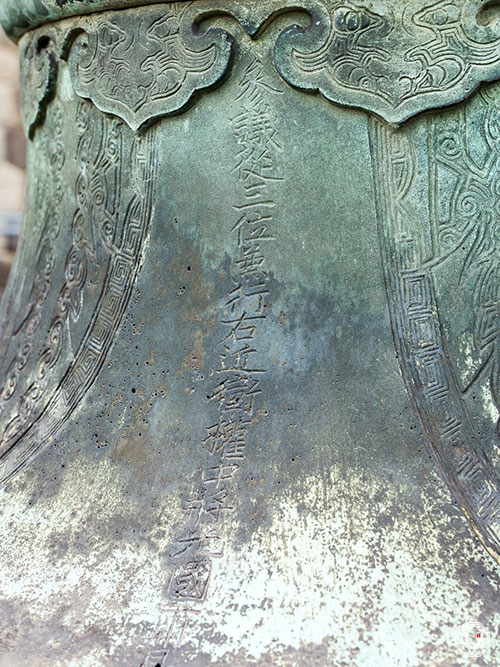
Goods and merchandise available at the museum shop
You’ll find a wide variety of items, from exhibition-related goods and books to postcards and clear files featuring the collection, notepads, and even original incense.
It’s the perfect spot to pick up a souvenir for fans of Japanese art.
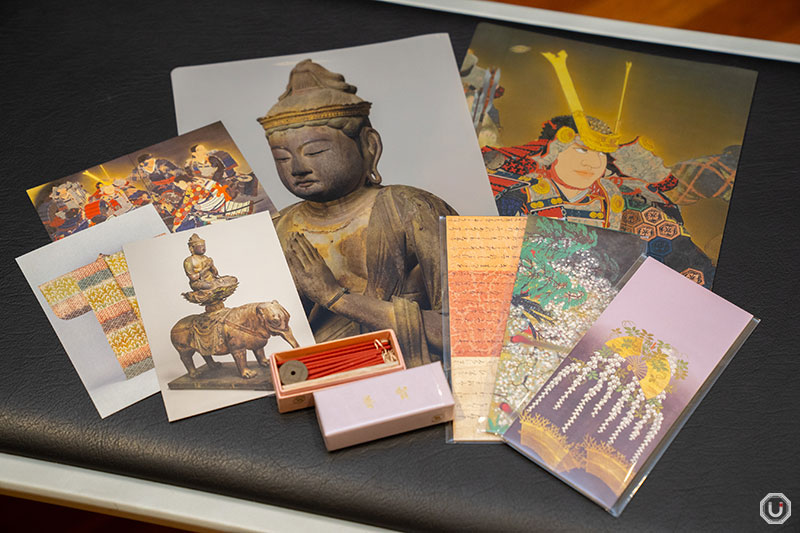
Goods available at the museum shop
On the first basement floor, there’s also a display of the “Ōkura-uro,” a rare metal flute with multiple holes that was invented in 1935 by Okura Kishichirō, who loved the sound of the traditional shakuhachi and wanted to adapt it for Western music.
This “phantom instrument” offers a glimpse into the personality of the hotel’s founder.
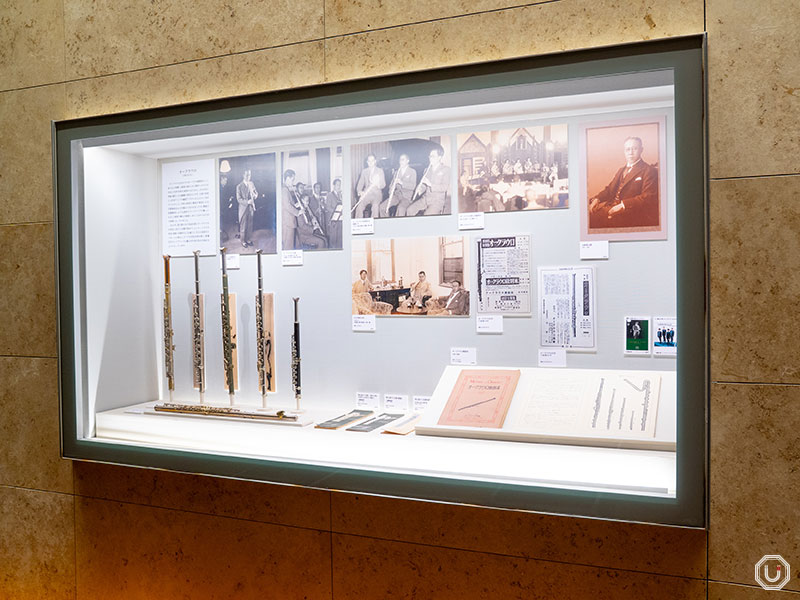
Ōkura-uro
As of September 2025, the museum is temporarily closed for exhibition changes. However, from November 22, 2025, to January 18, 2026, it will host the special exhibition “Gods and Buddhas Who Aid and Comfort People: The World of Daoist and Buddhist Figure Paintings,” as mentioned above.
The exhibition will feature paintings, mainly from the Edo period, depicting deities and Buddhas.
The unique combination of history, art, and architecture ensures that visitors experience a deeply resonant journey through time and beauty.
Information
| Facility name | 大倉集古館 Okura Museum Of Art |
|---|---|
| Address | 2-10-3 Toranomon, Minato-ku, Tokyo
|
| Access |
Kamiyachō Station 7-minute walk from Exit 4b
Roppongi-itchome Station 8-minute walk from Exit 3
|
| Phone number | 03-5575-5711 |
| Hours | 10:00-17:00(last entry is 30 minutes before closing) special and planned exhibitions require a separate admission fee |
| Closed | Monday (or Tuesday if Monday is a national holiday), New Year’s holidays |
| Admission | General admission 1,000 JPY(special exhibitions 1,500 JPY)) University students and high school students (ages 16 to 18) 800 JPY(special exhibitions 1,000 JPY) Free for junior high school students and above (ages 13 and blow)(Must be accompanied by a guardian) admission fee may vary depending on the exhibition |
| Official website | https://www.shukokan.org/ |
| Pamphlets | Available with Japanese and English language |
| Exhibit audio guides | None |
※All museum information in this article is accurate as of September 2025.
